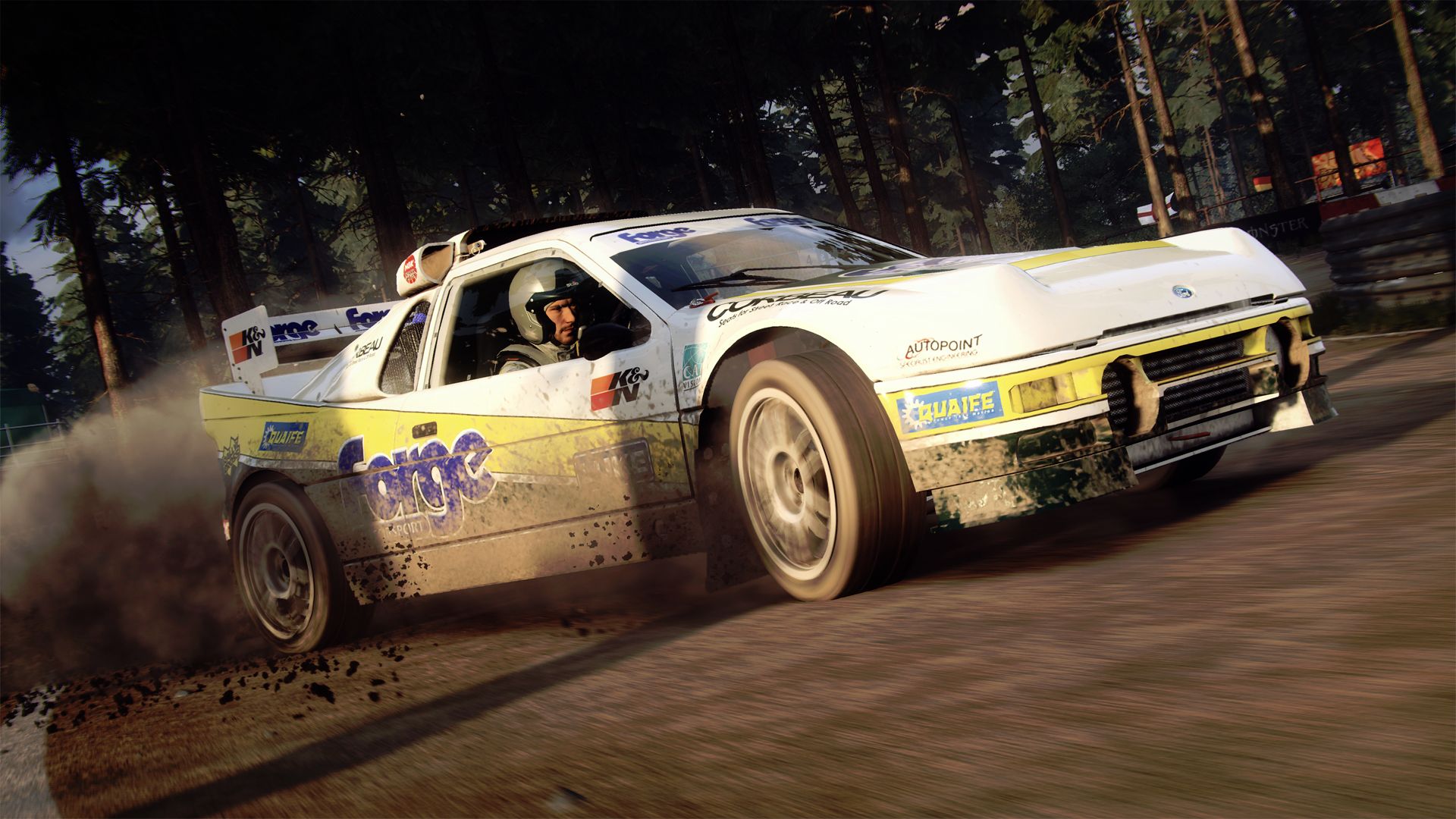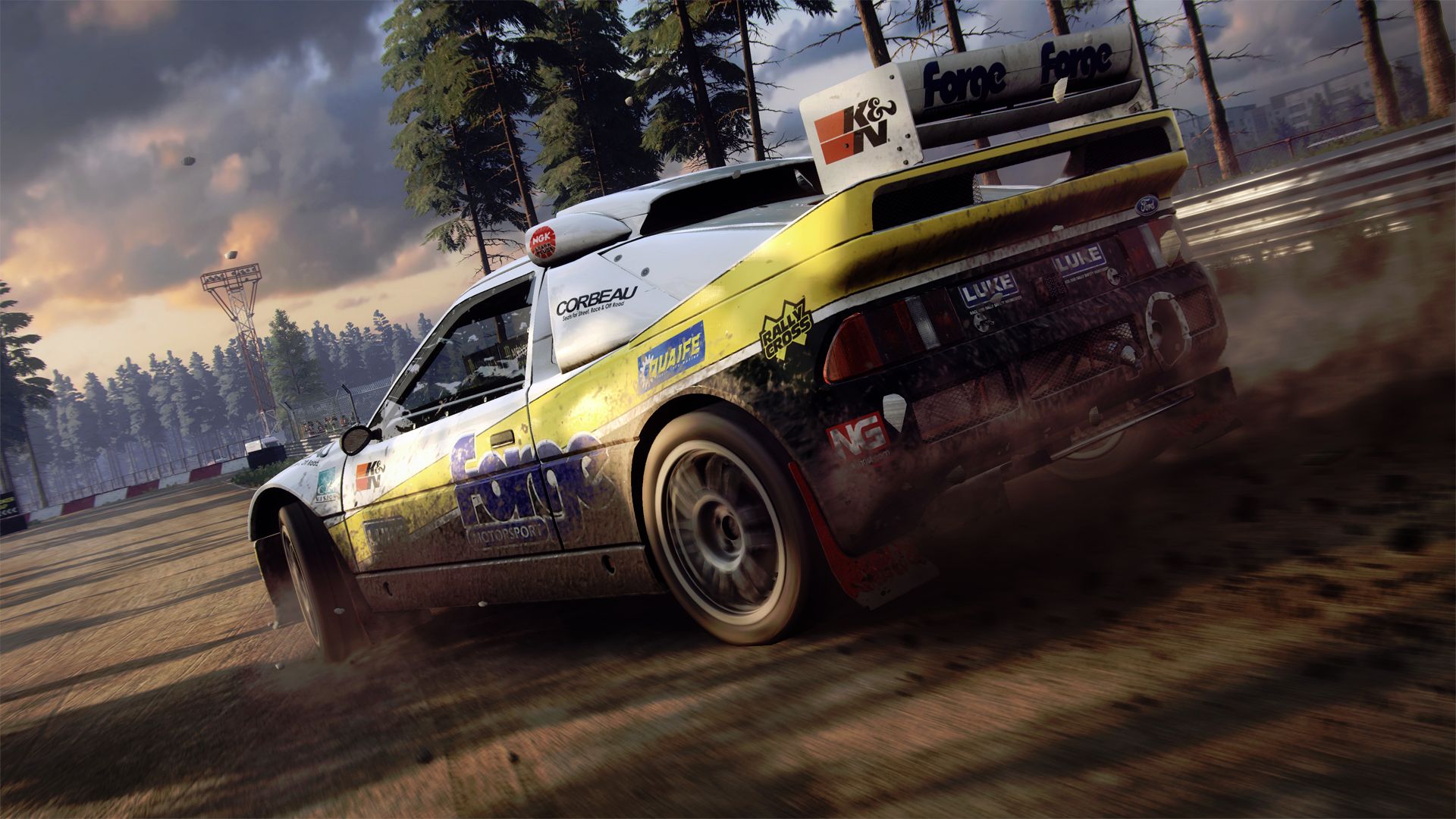DiRT Rally 2.0: Ford RS200 Evolution
BUY DiRT Rally 2.0: Ford RS200 Evolution
Click the button below to purchase DiRT Rally 2.0: Ford RS200 Evolution.
The Ford RS200 Evolution DLC for DiRT Rally 2.0 was developed by Codemasters and released in June 2019. At the time of its launch, Codemasters also served as the publisher, though later publishing responsibilities transitioned to Electronic Arts following EA’s acquisition of the studio. This DLC introduced the Evolution variant of the iconic Ford RS200, a Group B rally car known for its aggressive styling and explosive performance. The Evolution model brought even more power and refinement to the already formidable RS200 platform, making it a standout addition to the game’s vehicle lineup.
The DLC features the Ford RS200 Evolution with enhanced specifications compared to the standard RS200, including increased horsepower and improved handling characteristics. With its mid-engine layout and four-wheel drive system, the car delivers blistering acceleration and precise control across all rally surfaces. Players can use the RS200 Evolution in My Team, Custom, and Time Trial modes, taking advantage of its raw speed and rally heritage. Its inclusion in DiRT Rally 2.0 adds a thrilling option for those who enjoy mastering high-powered, historically significant rally machines.
Promotion for the Ford RS200 Evolution DLC was part of Codemasters’ ongoing content strategy for DiRT Rally 2.0. The studio announced the car’s release through Steam updates, social media channels, and developer blogs, often alongside other seasonal content. Screenshots and gameplay clips showcased the car’s aggressive design and performance capabilities, emphasizing its legacy in rally history and its appeal to fans of the Group B era. This promotional approach helped maintain excitement around the game and reinforced its reputation for delivering authentic rally experiences.
Reception to the DLC was generally positive, with players praising the Ford RS200 Evolution for its exhilarating performance and faithful recreation within the game’s physics engine. While the DLC did not introduce new gameplay mechanics, its historical significance and sheer driving intensity made it a welcome addition to the vehicle roster. The RS200 Evolution’s blend of speed, control, and rally pedigree contributed to DiRT Rally 2.0’s standing as one of the most immersive and comprehensive rally simulations available.
Ford RS200 In Depth
Introduction
The Ford RS200 is a mid-engined, all-wheel-drive sports car developed by Ford Europe in the 1980s as a purpose-built Group B rally contender and produced in limited numbers as a road car to meet FIA homologation rules. Designed to be radically different from Ford’s Escort-based rallyers, the RS200 combined a composite monocoque with a turbocharged Cosworth engine and a bespoke drivetrain to maximise traction and handling on loose surfaces. Ford Motorsport led the programme with contributions from external suppliers and specialist coachbuilders to deliver both competition and road-going examples between 1984 and 1986. Only a small number of finished road cars and parts kits were completed, which has contributed to the RS200’s strong subsequent mystique and collectability. The car sits squarely within the Group B era’s spirit of technical experimentation and regulatory loophole exploitation, which produced some of rallying’s most extreme machines. The RS200’s combination of advanced engineering and limited production has ensured it remains one of the most discussed and studied cars from that period.
Origins and project brief
Ford’s move to develop the RS200 arose from a recognition that rear-wheel-drive and modified production-based platforms would struggle against four-wheel-drive competition, notably Audi’s Quattro, under the new Group B regulations, so a clean-sheet, mid-engined design was chosen to deliver optimal weight distribution and four-wheel traction for rally stages. Internally the programme began after cancelling the rear-drive RS1700T project, redirecting resources toward a purpose-built machine that could exploit Group B’s relatively light homologation requirement of 200 units or parts kits. The brief prioritised compact dimensions, a stiff yet light chassis, and a drivetrain capable of handling high turbocharged torque while remaining serviceable in the field. Ford partnered with specialist firms for machining, composite construction, and final assembly to meet delivery schedules and homologation deadlines. Tony Southgate and other engineers produced a distinctive wedge-shaped body and a mid-mounted engine layout to achieve the handling and packaging targets laid out by Ford Motorsport. Homologation constraints, corporate timelines, and the complexity of the car’s design combined to make the development a high-pressure programme from the outset.
Design, chassis and bodywork
The RS200’s structure used a lightweight composite central tub with subframes to carry suspension and drivetrain components, allowing for a rigid platform with low weight and a safety-minded cell for the crew. The bodywork was sculpted to provide efficient aero and cooling for the mid-mounted turbo engine while remaining compact for narrow forest stages, yielding a distinctive low-slung, curvaceous profile that also aided downforce and stability. Suspension geometry and packaging were developed specifically for rally use, with long travel and robust components to tolerate rough surfaces while maintaining precise handling on asphalt tests. To save time and leverage specialist craftsmanship, final assembly and some components were produced by contractors, notably Reliant, under Ford’s direction, ensuring the unique build process suited the RS200’s one-off nature. The design deliberately separated the road and rally variants in specification while sharing the same core tub and layout so Ford could homologate the platform without compromising competition performance. The attention to structural rigidity and weight distribution remains a defining technical hallmark of the RS200’s engineering concept.
Powertrain and technical specifications
Early RS200 competition cars used a Cosworth-derived turbocharged inline-four with displacement around 1.8 litres in early BDT form and later 2.1-litre BDT-E variants for competition use, the engines being tuned for high specific output and strong mid-range torque required for rally stages. Road-going RS200s typically produced around 200–250 bhp depending on tune and specification, with competition derivatives producing substantially more power when unrestricted by road-legal constraints, and peak torque figures and power delivery tuned for rally application rather than pure top speed. The transmission was a five-speed manual coupled to a bespoke centre differential and transfer arrangements to provide a controlled front/rear torque split and robust operation under rally stresses. The car’s curb weight was kept relatively low through composite construction and aluminium substructures, helping performance figures such as a 0–100 km/h (0–62 mph) sprint time in the low-to-mid 5-second region for the more potent variants. Cooling, intake routing, and turbocharger packaging were tailored to the mid-engine layout, with intercoolers and ducting arranged to manage heat in both road and competition roles. Braking and tyre choices for the competition cars were selected to suit stage conditions, with road cars receiving a more tractable setup for everyday usability.
Homologation and road-going production
To comply with FIA Group B homologation rules Ford produced the RS200 as both road-going cars and parts kits; the requirement was to supply 200 examples in the prescribed timeframe, which Ford met through a mix of complete cars and kits assembled by external partners. Production officially ran between 1984 and 1986 and resulted in a small number of complete road cars and additional competition-only builds, with surviving totals often cited around a few hundred units when counting all completed chassis, parts cars, and race-spec examples. Road cars were offered in different specification levels to appeal to buyers while satisfying homologation paperwork, but the high cost, unusual layout, and limited practicality meant sales were slow compared with mainstream models. Ford’s complex supply chain for the RS200—using specialist manufacturers for composite tubs and Reliant for final assembly—was chosen to meet homologation deadlines and technical needs that regular Ford factories were not configured to provide. The mixture of full cars, component kits, and privately assembled examples has made exact production figures a subject of careful archival work among historians and collectors. The rarity and provenance complexity are core reasons the RS200 commands close attention from restoration experts and enthusiasts today.
Competition history and performance
The RS200’s competition career was short and troubled; it debuted in the mid-1980s Group B championship but never delivered consistent championship-level success mainly due to development time lost, fierce competition from manufacturers like Peugeot and Lancia, and the rapidly escalating power and danger of Group B machinery overall. Early rally appearances showed the RS200’s potential for speed and agility, but reliability issues, turbo lag characteristics, and set-up challenges on varied stages limited its effectiveness, and Ford struggled to extract consistent pace from the programme before the Group B era was curtailed. The tragic incidents and safety concerns that culminated in the FIA banning Group B for 1987 curtailed the long-term development and competitive evolution the RS200 needed to reach its full potential, denying the car the extended competition life that earlier development cycles might have enabled. After the Group B ban, RS200s continued to appear in selected national events, rallycross and hillclimb events where their performance could still be exploited under different rulesets, and some private teams developed them for specialist competition use. The car’s few standout stage results are often cited alongside the “what might have been” narrative that has come to define its motorsport reputation. Despite limited outright success, the RS200’s engineering solutions influenced subsequent rally and high-performance road-car thinking within Ford and among private tuners.
Decline of the programme and aftermath
The abrupt end of Group B effectively terminated factory development of the RS200 as manufacturers pivoted toward safer, more regulated competition classes, leaving many RS200 projects and partially developed competition variants without a clear future. With factory support withdrawn, maintenance and further development fell to private teams and specialist garages, and many competition chassis were adapted for other motorsport disciplines such as rallycross where the car’s traction and power could still be an advantage. Road car support and parts supply became more fragmented after official production ceased, driving a market for donor cars, spares collections, and specialist reproduction components that persists among enthusiasts and restorers. The car’s rarity, dramatic looks, and the romantic aura of the Group B era elevated the RS200 into a high-value collectible; this coupling of drama and scarcity steadily increased interest from collectors and investors through the 1990s and into the 21st century. Technical documentation, factory manuals, and surviving engineers’ recollections have helped restoration projects but gaps in factory records mean provenance research is often complex for individual chassis. The RS200’s decline was therefore less a failure of engineering and more a consequence of regulatory and safety-driven shifts in rallying that removed the environment in which it was intended to compete.
Legacy, collectability and modern influence
Today the RS200 is recognised as one of the iconic artefacts of Group B: its innovative mid-engined layout, composite construction, and homolgation story capture the era’s extremes, and surviving examples command high prices and intense interest at auctions and specialist sales. Collectors prize original competition and homologation-spec road cars for rarity and provenance, while detailed restorations and sympathetic remakes have emerged to satisfy demand and preserve the RS200’s technical heritage. The RS200’s engineering choices—lightweight tubs, bespoke drivetrains, and turbocharged Cosworth engines—left a clear imprint on later performance projects and influenced Ford-affiliated motorsport engineering philosophies for decades. Recent retrospectives, anniversary features, and Ford’s own remastered or tribute efforts have kept the RS200 in the public eye and have encouraged renewed technical study and documentation of surviving cars. As with many Group B machines, the RS200’s mystique is amplified by its limited competition record; enthusiasts and historians continue to debate how competitive it would have become with uninterrupted factory development and the evolutionary time enjoyed by rivals. The car’s presence in museums, private collections, and specialist events ensures its story remains an active part of rallying history and performance-car culture.
Legacy, collectability and modern influence
The Ford RS200 stands as a technically ambitious response to a transformative moment in rallying, built to exploit Group B’s permissive rules with a fresh mid-engined, all-wheel-drive concept that prioritised balance and traction over derivation from production models. Development pressures, homologation constraints, fierce manufacturer competition, and the premature end of Group B combined to limit the car’s competitive achievements while simultaneously ensuring its status as a rare, iconic machine cherished by collectors and historians. Today’s fascination with the RS200 reflects both its intrinsic engineering interest and the broader nostalgia for Group B’s daring period, with surviving cars and restored examples serving as tangible reminders of an era when rallying pushed the boundaries of performance and risk. The RS200’s technical lessons and dramatic story continue to inform how performance cars are engineered, presented, and preserved, ensuring its place in automotive history remains secure.
Related Searches
DiRT Rally 2.0: Ford RS200 Evolution Download
DiRT Rally 2.0: Ford RS200 Evolution is available to purchase and download from a range of vendors. Always shop....
DiRT Rally 2.0: Ford RS200 Evolution Key
There are a wide range of resellers that may offer keys for DiRT Rally 2.0: Ford RS200 Evolution. This is often the....
DiRT Rally 2.0: Ford RS200 Evolution Review
The Steam store provides a review system enabling you to make an informed choice before buying this....
DiRT Rally 2.0: Ford RS200 Evolution Free
DiRT Rally 2.0: Ford RS200 Evolution is available to purchase and download from the link shown further up this....
DiRT Rally 2.0: Ford RS200 Evolution PlayStation
At the time of publishing, DiRT Rally 2.0: Ford RS200 Evolution is available on the PlayStation platform.....
DiRT Rally 2.0: Ford RS200 Evolution Xbox
At the time of publishing, DiRT Rally 2.0: Ford RS200 Evolution is available on the Xbox platform. There are...







